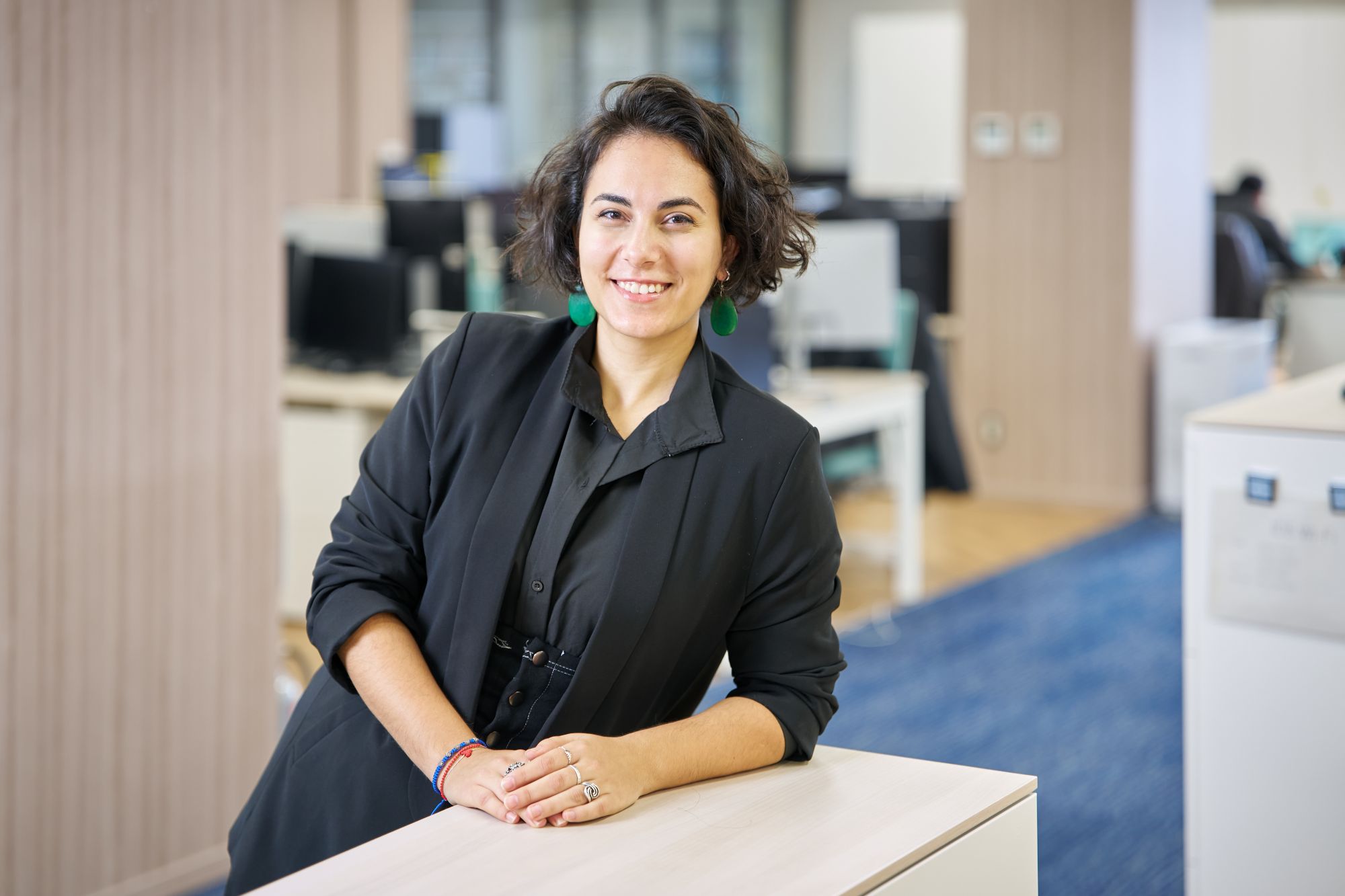
Dr. Jovana Panic, Specially Appointed Researcher, Premium Research Institute for Human Metaverse Medicine (PRIMe)
"Building bridges of medical communication in Osaka, Japan’s “City of Water”"
Dr. Jovana Panic joined Osaka University’s Premium Research Institute for Human Metaverse Medicine (PRIMe) in 2024. Established as a World Premier International Research Center Initiative in FY2022, PRIMe aims to establish the ground-breaking scientific field “Human Metaverse Medicine” while comprehensively and continuously elucidating the process of disease development. The goal of PRIMe is to develop personalized prevention methods and curative treatments for diseases. Dr. Panic has embarked on her post-doctoral journey with PRIMe after obtaining her PhD in Bioengineering and Medical-Surgical Sciences in March 2024 through a joint program between Polytechnic University of Turin and University of Turin, Italy.
Bridging the gap between clinicians and data scientists through research
Dr. Panic focuses on developing non-invasive tools using medical imaging and Artificial Intelligence (AI) to assist in diagnosis and prognosis, particularly for oncological applications such as rectal and prostate cancer. Currently, her main topic is the development of automatic AI systems for the detection and prediction of pathology onset (i.e., diabetic retinopathy, age-macular degeneration, etc.) on retinal fundus images. This research is carried out thanks to the interdisciplinary collaboration with expert ophthalmologists. She investigates how Machine Learning (ML) and Deep Learning (DL) impact the diagnosis and prognosis of these diseases. In recent years, she has analyzed key challenges limiting the clinical adoption of AI tools, including data variability in multi-center medical databases and the absence of clear guidelines for implementing AI systems in medicine.
Dr. Panic noticed challenges involved with biomedical engineering research in Japan compared to the situation in Italy. She says, “There are still some gaps in communication between clinicians and computer scientists in Japan. I would like to be useful in helping to create bridges for communication between them and to make technicians able to be supportive from their side without making them feel as if they are simply manipulating hardware to support the clinicians.” She continues, “At the same time, I want to provide an environment in which the clinicians can feel safe using these new tools because while artificial intelligence is a wonderful and powerful feature that everyone uses nowadays, it’s still a bit contradictory and there are a lot of ethical aspects that, from my point of view, still need to be clarified. I hope to ensure that both patients and clinicians will benefit from these kinds of techniques in medical environments such as hospitals.”
Given the current situation regarding usage of AI in clinical practices, Dr. Panic has found a role in which she can contribute as a scientist with a PhD in Bioengineering and Medical-Surgical Sciences. “I feel the needs to create bridges of communication, to make everybody feel safe and secure while using these kinds of tools, and to clearly explain how to use them. I think of artificial intelligence as being like a knife: extremely powerful, but also potentially harmful if not used correctly. So, I would like to create clear communication between these two aspects of society through my research.”

Osaka provides a stimulating environment both inside and outside of the lab
Dr. Panic is in the Information and Mathematical Sciences/Artificial Neural Modeling Group, led by Professor Hajime Nagahara. She enjoys and appreciates her autonomy in conducting research at PRIMe, which makes the most of her expertise in biomedical engineering. She also likes the working in the lab with young researchers including students, which she finds lively and stimulating.
Even outside the lab, the cosmopolitan and open-minded area of Osaka has been very welcoming to her. Dr. Panic enjoys the rich history and culture of Osaka and is particularly pleased with its great food.
She mentions, “When I look at Osaka, I see a lively society full of people who greatly respect both each other and the environment in the surrounding area. And it’s not just the parks, but also the buildings and city centers, so every time I'm able to go out, like on the weekends, I try to let myself be like a tourist despite also living and working comfortably in Osaka.” She continues, “Thanks to Osaka’s unique location, it's also quite close to other wonderful cities like Kyoto, Kobe, and Nara, so I'm always trying to discover new aspects of the surrounding Kansai region.”
It seems that working at PRIMe and living in the region has significantly enhanced her potential both as a researcher and as a global citizen.
Text: Saori Obayashi/Edit: Christopher Bubb